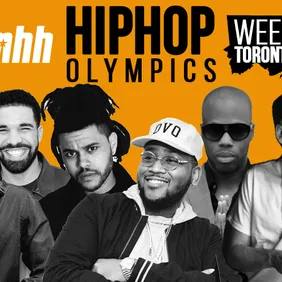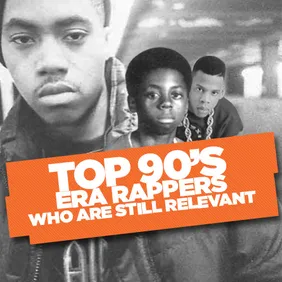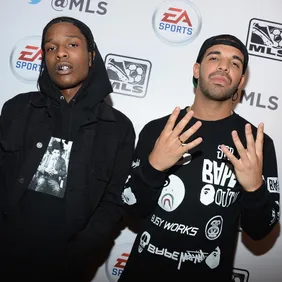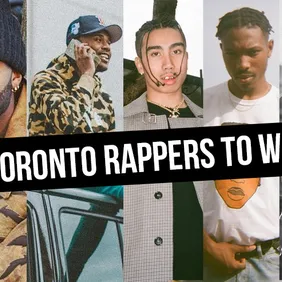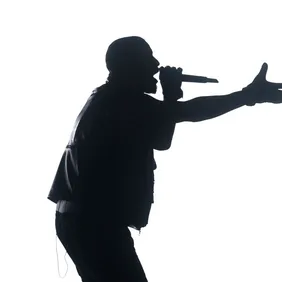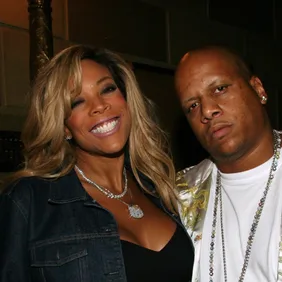Home to one of the game’s biggest stars and several acclaimed risers, Toronto is finally emerging as the hip hop force it’s spent over two decades trying to become. Until recently, the city’s place on the world stage was tenuous. As North America’s fourth largest market, Toronto has produced talented and original acts since the 1980’s, but with the exception of a few cross-over singles—think Maestro Fresh Wes’ “Let Your Backbone Slide” or Kardinal Offishall’s “Bakardi Slang”—seldom have Toronto-based artists managed to stake a permanent, international plot for themselves. It is as if the city could provide an aspiring rapper with a fine hip hop education but only limited access to widespread commercial success upon graduation. With the ascent of Drake and the current generation, however, Toronto’s place in hip hop’s batting order appears to have been bumped up a few spots.
Regardless of what feelings one might have towards the former “Degrassi” actor, Drake’s success has been remarkable. He’s become one of the genre’s most popular acts: according to Pollstar, Drake has had 2012’s highest grossing hip hop tour. He’s has also been a vocal supporter of his hometown. This is imperative since, in using commercial success as our measuring stick, he is the city’s first true hip hop superstar. One only has to trace the upsurge of Toronto’s The Weeknd, whose lyrics Drake tweeted and whose music he linked on his own site to great fanfare, as evidence of his influence.
The Weeknd is one of music’s most intriguing artists—in any genre. A one-man production (with help from producers Doc McKinney and Illangelo), the voice behind The Weeknd belongs to twenty-two year old Abel Tesfaye. His debut album, House of Balloons, earned rave, even superlative critical reviews, and mixed tales of debauchery with eclectic sampling and a melodic soprano. Reluctant to do interviews, Tesfaye remains shrouded in mystery, and just last week released the compilation LP Trilogy. With a wealth of talent and, vitally, a level of public interest commensurate with it, The Weeknd appears poised to remain a hip hop mainstay for the foreseeable future.
More Torontonian talent exists outside of the long shadows cast by Drake and now, The Weeknd. Rapper Shad has been a popular performer for some time, and his last LP, TSOL, received favorable reviews. Somali-Canadian rapper K’naan’s single “Wavin’ Flag” was chosen as the Coke’s promotional song for the 2010 World Cup. Not to be forgotten amidst the males, Toronto songstress Melanie Fiona has released two LPs and received four Grammy nominations, winning two. Last Kings' femcee Honey Cocaine has also leveraged her YouTube following into a budding rap career, with the help of Young Money's Tyga (view her interview here). Featured recently on HNHH with an original track "Dependency", Torey Lanez is yet another name to list.
Other upstarts, like Luu Breeze (HNHH HeatSeeker alumni) and JD Era (pictured, with the Toronto skyline behind him), rap capably and about subjects—women and weed in particular—that will endear them to fans of any cultural bent or persuasion. In the latter instance, Era has rap titan Raekwon behind him. The Wu Tang stalwart opened a Toronto branch of his record company, Ice H20, last year, with the intention of providing more exposure and developmental opportunities to local artists. Raekwon’s name and weight in the United States will be invaluable for aspiring Torontonians, and his decision to locate part of his business in the city speaks to its growing prestige. He has big plans for Toronto: as he told the Sun last year, “We want to be the one that says, 'Yo, we want to help build and build a bigger and better industry.”

The recent success of Toronto emcees was not created in a vacuum, because the city has spawned talented acts over two decades. Before Drake, there was (and, in some cases, continues to be) Maestro, Kardinal Offishall, Solitaire, Choclair, Saukrates, k-os, Ghetto Concept, and the Baby Blue Soundcrew. Before Melanie Fiona there was Jully Black, and the rappers Michie Mee and Montreal transplant Tara Chase. Hip hop-oriented artistic talent bled into video production as well, in the form of Hype Williams' protégé Little X, who’s directed for many top artists. One of X’s early triumphs was the video for the single “Northern Touch”, which assembled some of Toronto—indeed Canada’s—best rappers, and remains a seminal moment in the evolution of Canadian hip hop. Equally gratifying, the video also provided the debut of bombshell video vixen and native Torontonian Melyssa Ford.
If Toronto has historically been home to so much talent, then why, until Drake, have its artists rarely blown up internationally? The answer to this isn't obvious or easily summarized. For one, the style of hip hop, so heavily influenced by the Caribbean roots of many of its performers, might have seemed a phonetically or linguistically strange to an American audience used to its homegrown rhythms and rhymes. Another reason is the city’s reputation; while Toronto is periodically marred by gunplay, it hasn't experienced the same degree of gang violence that’s plagued so many American cities. In a prior era, when violence and aggression were hallmarks of commercial hip hop, Toronto’s gentility often precluded the serious, widespread consideration of its artists, and particularly its rappers.
Hip hop culture has changed dramatically in the past few years, and the Toronto scene has benefited. The galactic success of Kanye West proved one mustn't necessarily be hard to become a leading act, and this paradigm shift open doors for rappers like Drake that might otherwise have been closed. It has also made the careers of many other local artists more viable. Of course, the city doesn't exercise the same influence that its larger, more established American peers do, and perhaps never will, but its current success will at least intensify the spotlight now trained on it. While this attention has mostly come too late for the artists that created the foundation for today’s current crop, it seems, nonetheless, to have finally arrived.

